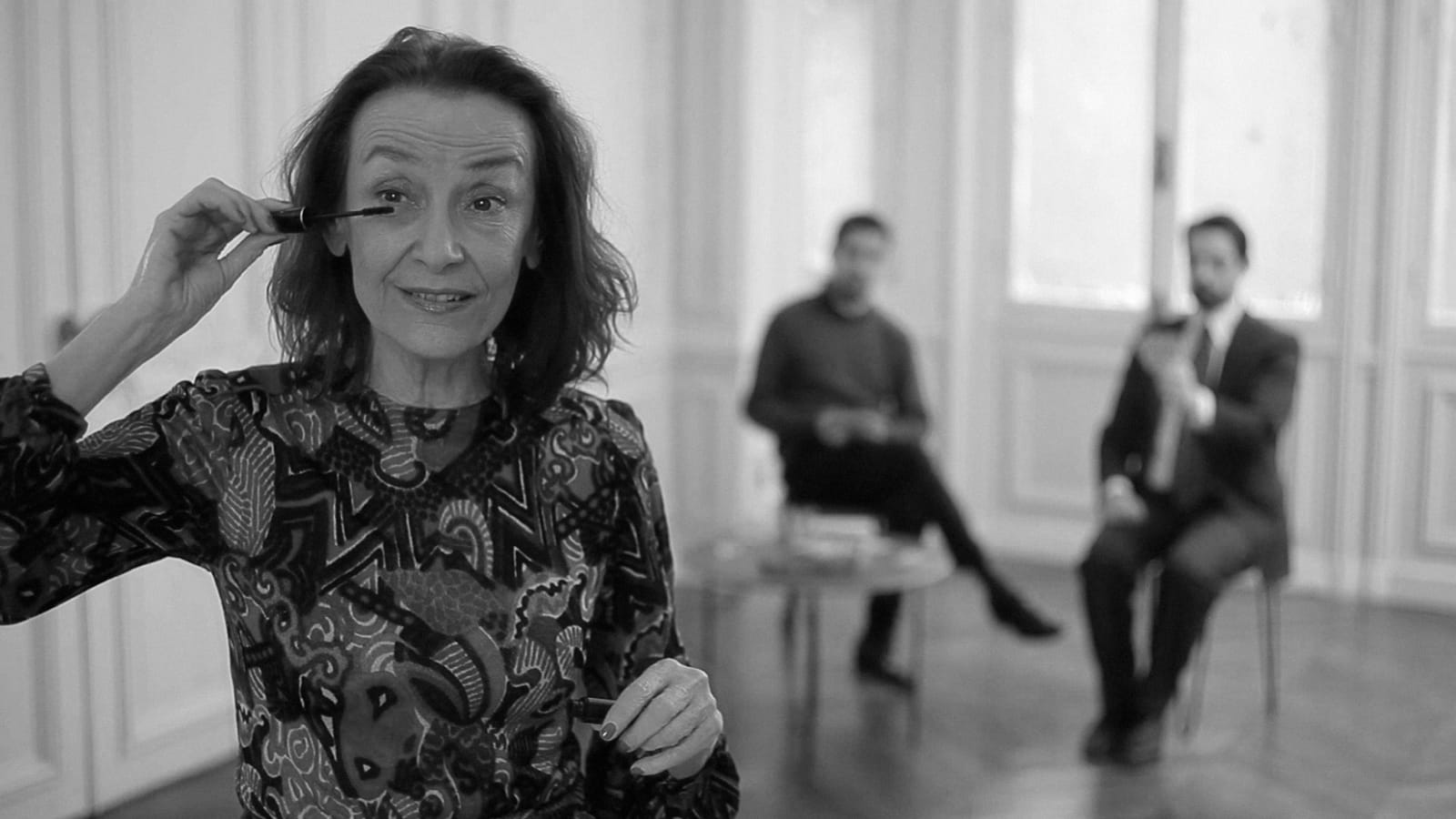
Ulla von Brandenburg
Further images
The lms commence with two male characters looking at themselves in the mirror while applying make-up. The lm captures the interaction between the characters through the mirror. Their duplicated actions reference the duplicated copies of the lm itself and the deception of the image.
Spiegellied (Mirrorsong) explores aspects of theatre and constructed behavior through performance. As the male characters participate in a game of cards, their dialogue refers to them playing within a play and the duality of the nature of acting. Rather than speaking, the characters mime to the singing of the soundtrack. It references “sing- spiel”, a form of popular musical drama where spoken dialogue alternates with song, which was widespread in German-speaking countries in the 18th and 19th centuries. Within Ulla von Brandenburg’s soundtracks the voice (whether that of the artist herself or someone else) is often identical even when different characters are singing.
As with many of von Brandenburg’s works, the black and white lm is suggestive of certain nostalgia for its mode of production, underlined by the anachronistic diction of the song and the ritualistic action of the characters. The artist explains this choice as a desire to give her images a timeless quality, not easily located in any particular period.
Mirror Song: variable projection dimension
beamers: BenQ W1000
players (sync installation): BrightSign HD1010 (sdhc class 4 flash card)
your video files are synchronized and playbacked at 720p (upscaling in beamer to a 'fake' 1080 - after several tests, this was visually clearly the best option)
(video file encoding is Media Concept H.264 ('AVC'), at 25 mbps in level 4.1 CBR)
Provenance
SPPIEGELLIED (Mirrorsong), 2012 is made up of two projections; seemingly identical both films were shot separately. Each element that appears in one projection finds itself mirrored in the other and vice versa.
The films commence with two male characters looking at themselves in the mirror while applying make-up. The lm captures the interaction between the characters through the mirror. Their duplicated actions reference the duplicated copies of the lm itself and the deception of the image.
SPIEGELLIED (Mirrorsong) explores aspects of theatre and constructed behavior through performance. As the male characters participate in a game of cards, their dialogue refers to them playing within a play and the duality of the nature of acting. Rather than speaking, the characters mime to the singing of the soundtrack. It references “singspiel”, a form of popular musical drama where spoken dialogue alternates with song, which was widespread in German-speaking countries in the 18th and 19th centuries. Within von Brandenburg's soundtracks the voice (whether that of the artist herself or someone else) is often identical even when different characters are singing.
As with many of von Brandenburg’s works, the black and white lm is suggestive of certain nostalgia for its mode of production, underlined by the anachronistic diction of the song and the ritualistic action of the characters. The artist explains this choice as a desire to give her images a timeless quality, not easily located in any particular period.
Exhibitions
Gleich, Gleich, Gleich, KIOSK Galerie, 15 February - 14 April 2013
Following the signs, Herzliya Museum of Contemporary art, Curator: Noam Segal. 23 January 2013
Mirrorsong, Pilar Corrias Gallery, London. 24 Feburary - 30 March 2012
